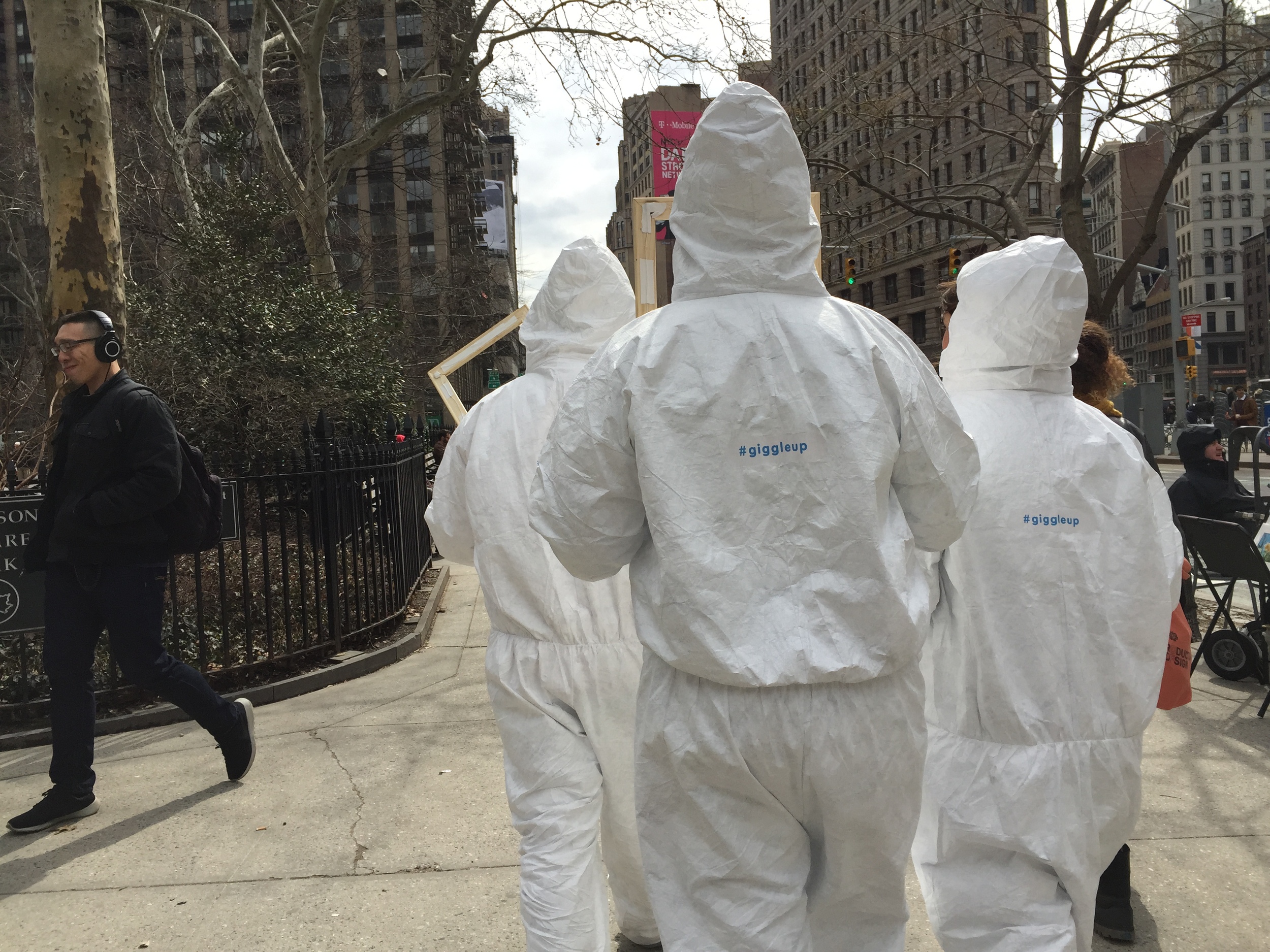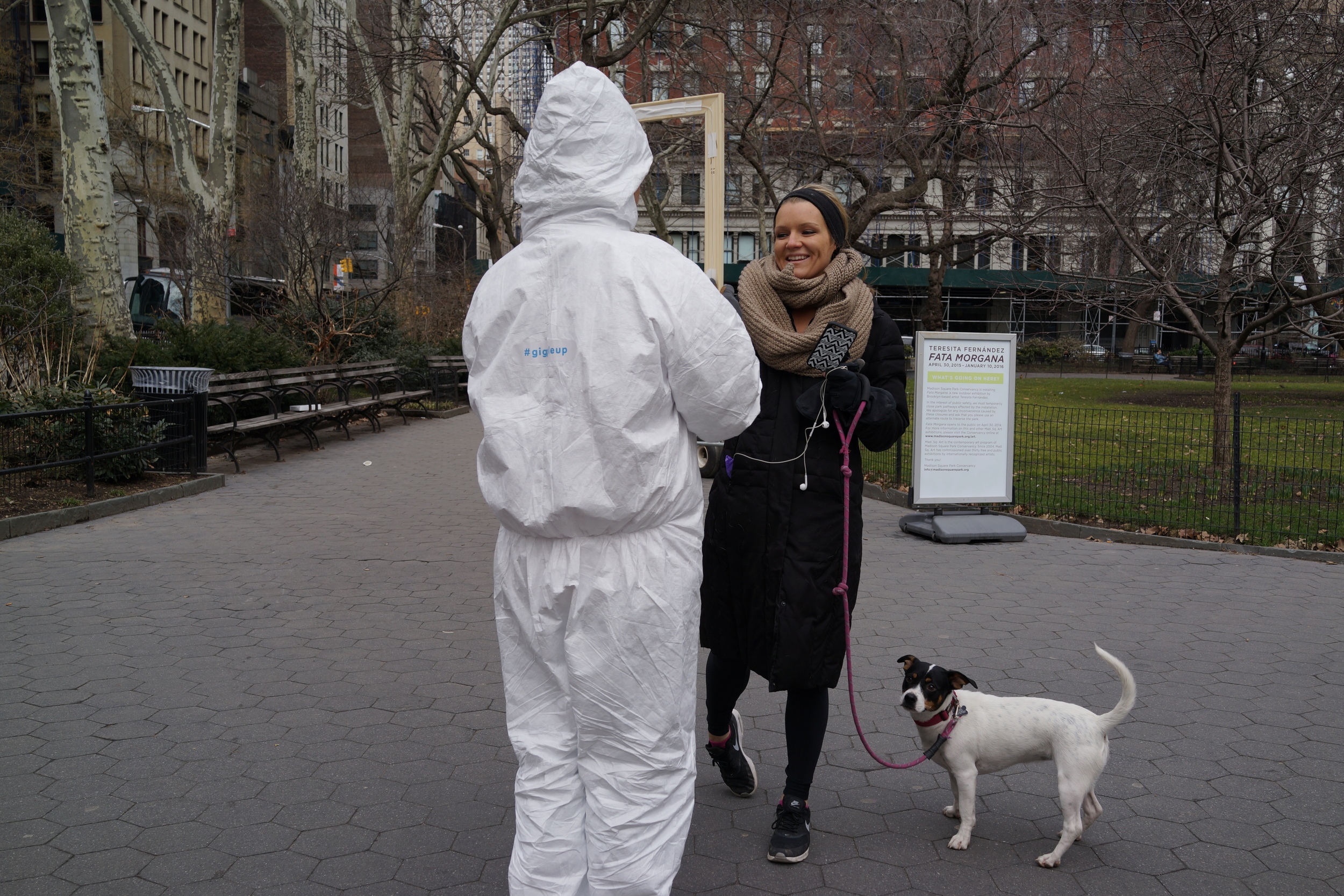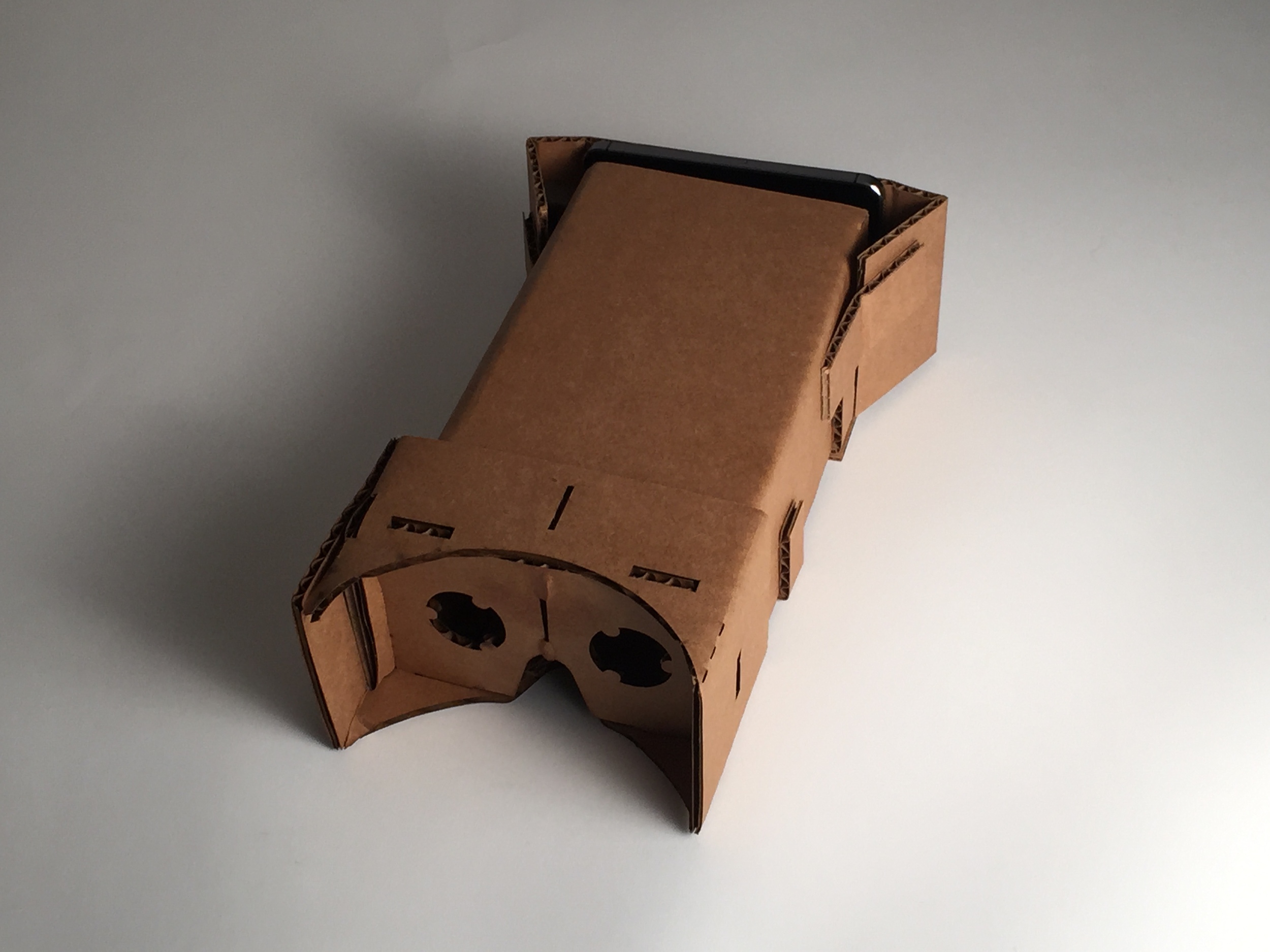Giggle Up is a design performance and interactive experience to investigate the idea of spreading the contagious laughter. The happening took place on March 28th, 2015 in the Flatiron District. Three actors, including me, dressed in white Tyvek costumes carried wooden frames that have on/off toggle switches and LED indicators on them. The experience is designed to have three main parts:
1- Attraction: The conspicuously big toggle switches and actors who were dressed funny attracted people. Many people stopped and watched the show curiously.
2- Engagement: When the audience got engaged with the actors to turn on the switches, actors started to laugh loud, which also caused the audience to laugh.
3- Takeaway: In the end, people who engaged with the happening were given stickers to put on their body, which allowed them to have a "giggle up" button, too. Then they started to play the game with each other by pushing each others' button and laughing.





















